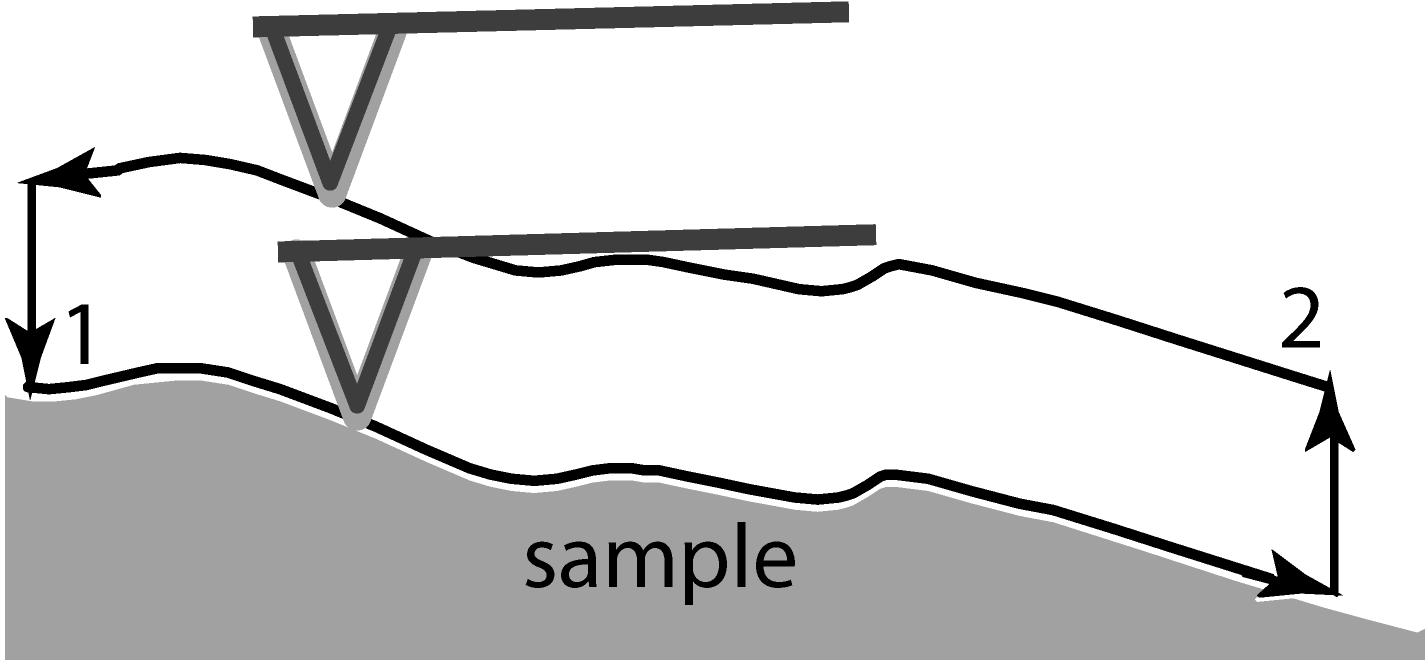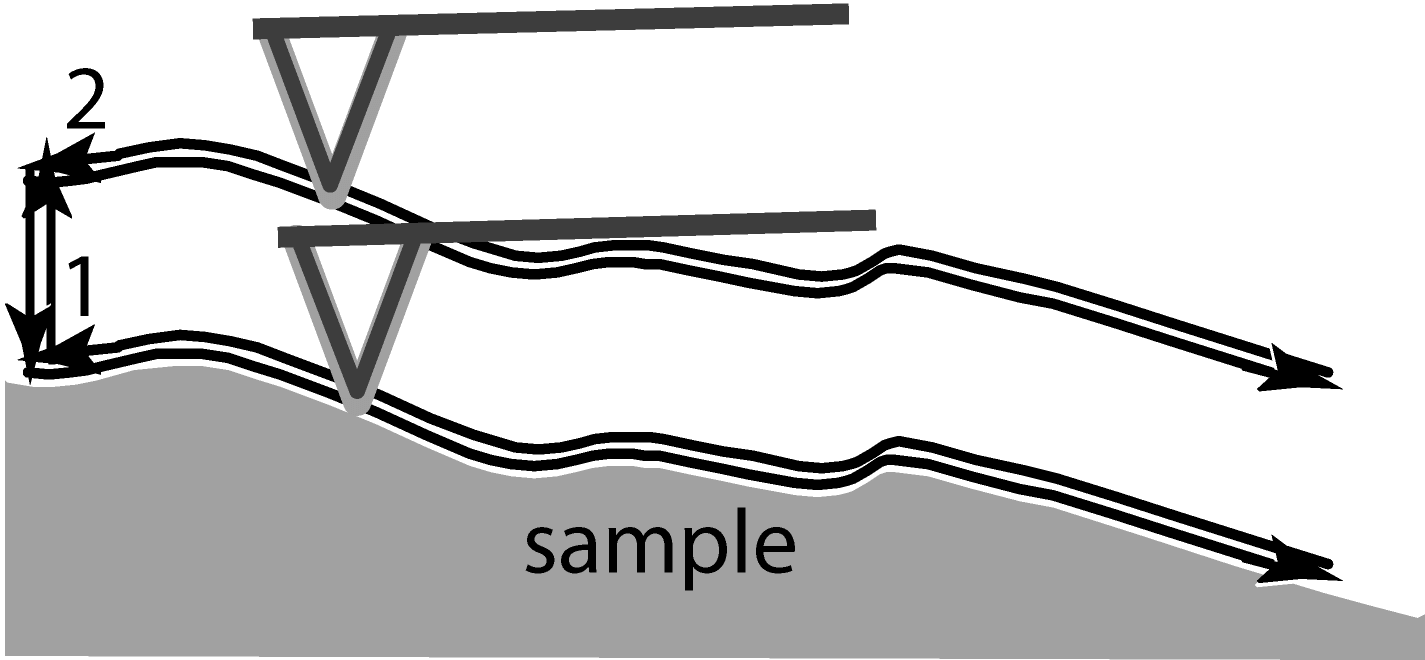Additional measurement modes often in combination with special cantilevers enable the measurement of sample properties beyond the topography. Examples are Magnetic Force Microscopy (MFM) and several electrical AFM modes. Some of the modes depend on the detection of magnetic or electrical fields. Key in such measurements is to separate the short-range van der Waals forces from the longer range electrical or magnetic forces. A lifting mechanism enables the probing of longer range electrical and magnetic forces, and deconvoluting them from the short-range van der Waals forces that are present during topographic imaging. The height that the tip is lifted over the sample is often a parameter that needs to be optimized by the user in order to have successful imaging of the magnetic or electrical properties and is typically in the few to hundreds of nanometer range. The lifting can be done in so called single, interlaced and dual scan line modes.
Single pass methods
In a single-pass or constant height setup, the slope of the surface is measured from a completed topography image or line before the imaging of the long range interaction is started, and then the tip is scanned at a fixed height above the sample, compensating for the average slope.
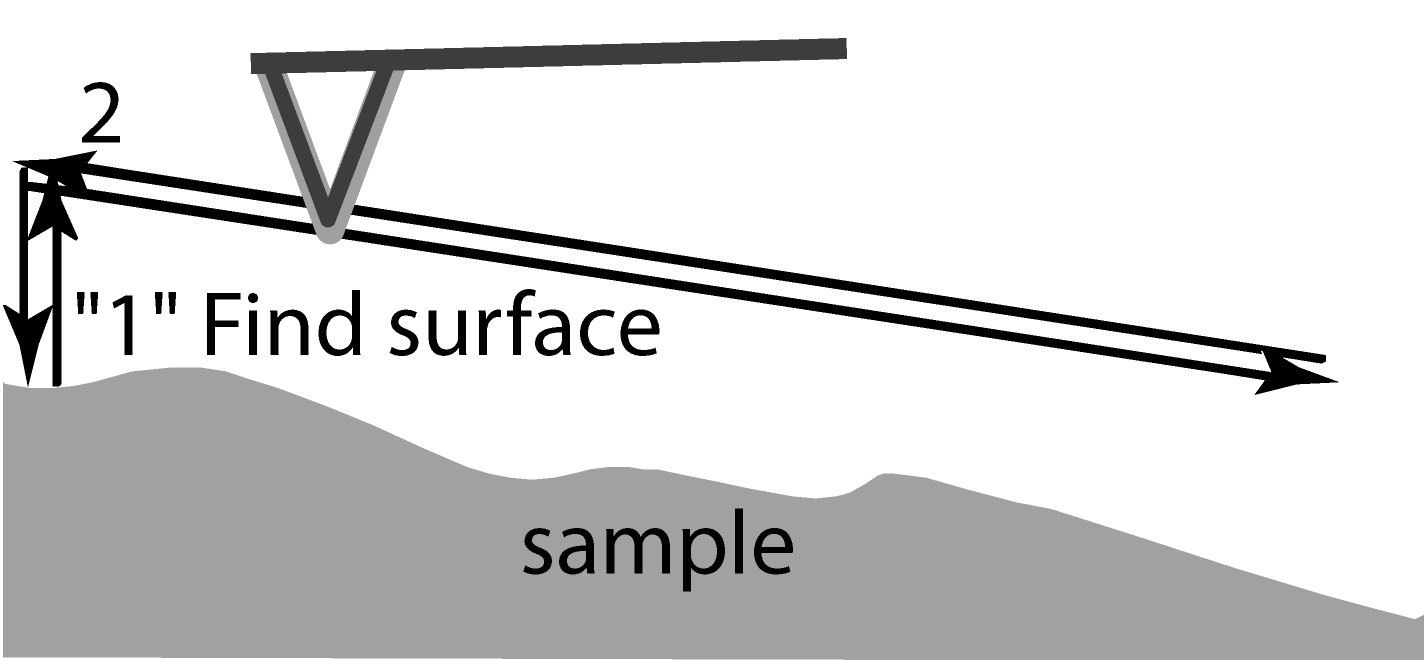
Dual pass methods
Alternative to the single pass are the interlaced and dual pass imaging modes (left and right in schematic below, resp.), providing the topographical information of the surface along with the functional signal. In interlaced mode the forward pass records the topography of a scan line and then the tip is lifted above the sample during the backward pass. In dual pass topography is measured forward and backward in the first pass and the long range signal in the forward and backward movement of the second pass. Dual scan provides the more accurate correlation between topography and long range signal, wheras the interlaced mode is faster.
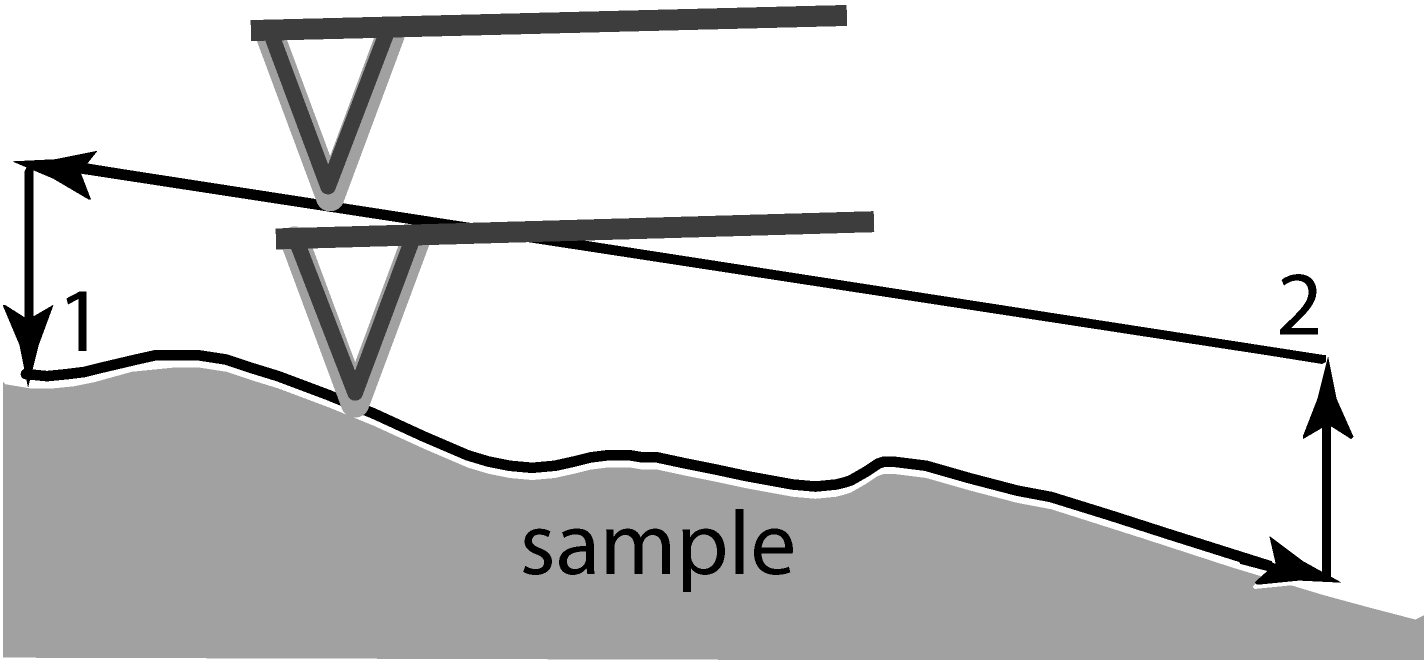
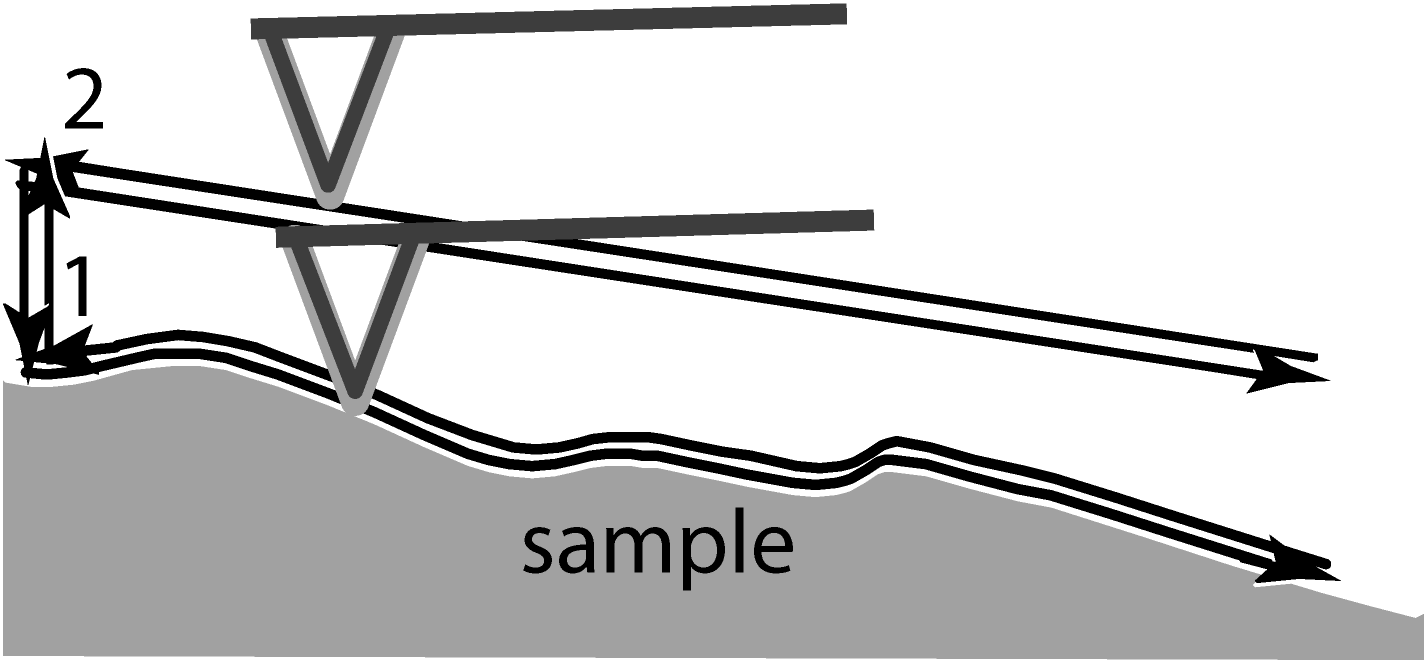
Since the long range interactions depend on the distance between tip and sample, additional phase contrast is generated when moving at constant slope over a sample with considerable height variation. Contour following, which is an option available for interlaced and dual scanning imaging mode on C3000 and CoreAFM product lines, scans the cantilever above the sample, keeping the separation constant, as depicted schematically below. For very flat samples like hard discs or polished steel contour following is not critical, whereas it may become essential if surface protrusions exceed some tens of nanometers, as shown for an Electrostatic Force Microscopy (EFM) example with 100nm high pedestals.
